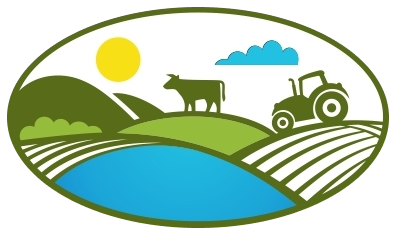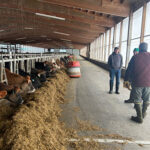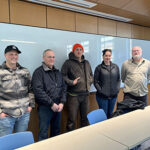
Cameron Clark is the co-owner of Riverhill Farms in Williston, Vermont. Riverhill is primarily a certified organic dairy farm, but also includes certified organic maple sugaring, equine boarding, and trail riding. She farms with co-owner/mother Patrice, partner Dan O’Shaunnessy, and employee Wendy Manchester.
When we first asked Cameron Clark if we could include her in this Featured Farmer series, it was the dead of winter.
She enthusiastically accepted our invitation under one condition: That we save our visit for summertime. She envisioned showing us her farm when the Vermont landscape was lush and green, her herd of organic dairy cows dotting the hillsides.
We set the date for July 12. Mother Nature, we would later learn, had other plans for this day.
When Cameron awoke on July 11, she was shocked to find 75% of her pastures and fields covered in five feet of water. Around 6-8 inches of rain had fallen the day prior. The Winooski River, which traces the east side of her farm, had overrun its banks, cresting to a high of 27 feet.
Under normal circumstances, Cameron would tell you the benefits of farming near a river.
“It’s a blessing most years,” she says. “We have really good river bottom soil. It grows really good grass. It retains moisture well when we have it.”
She pauses before adding, “Then you get the one freak event. A typical spring flood is no big deal, but this is exceptional. Very exceptional.”
And if anyone is an expert on what is exceptional for the area, it’s Cameron. She is the eighth generation of farmers in her family to have stewarded this land since 1835. They purchased it from Thomas Chittenden, the first governor of Vermont. It has always been a dairy farm, and for a long time, it was conventionally operated. Her family stopped milking cows in 2007 while she went back to school. Cameron decided that if she were ever to resume milking cows, her farm would become organic.
She did just that in 2012. She started with 20 cows and grew her herd internally to 50 mature cows today. All along, she has been shipping the cows’ milk to Organic Valley. In 2019, she added “grass-fed” to her label.
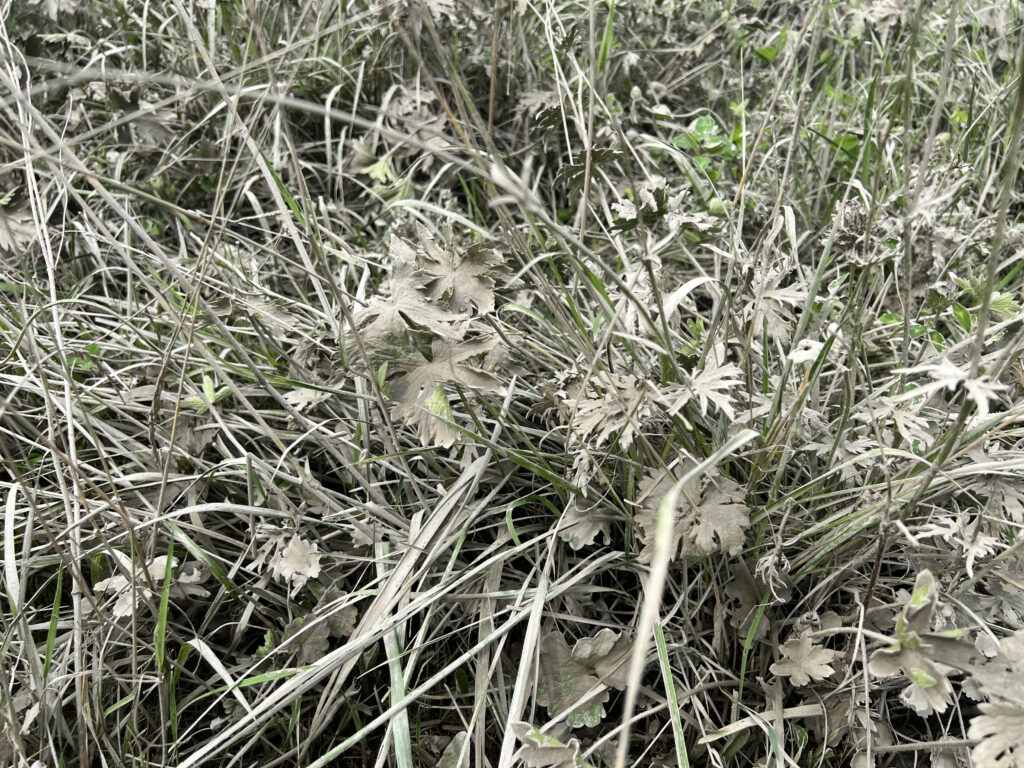
That is one of the reasons why her flooded pastures and fields are so heartbreaking for us to behold. To her credit, Cameron let us keep our July 12 appointment. As we wound our way up Governor Chittenden Road toward her 560-acre farm, the floodwaters had already receded quite a bit. But the evidence of their recent presence still remained. Silt clung thick and gray to all the vegetation, rendering it unsafe for Cameron’s cows to eat.
When we reached the top of the hill where the farm’s buildings are located out of harm’s way, we found the cows tucked safely in the barn. They were happily munching on hay, but Cameron, who loves her cows dearly, could tell they were missing life in the pasture.
“We need to figure out when it will be safe for them to get back into the fields,” Cameron explains. “We’re considering clipping everything, allowing the rain to wash the silt back into the ground, and letting it grow back.”
As with most things in farming, that’s easier said than done.
“The same thing happened during Hurricane Irene and I had to keep my cows in the barn for a month,” she recalls.
Cameron will also need to apply for a variance for the grazing requirements for her organic certification. Her cows must get 60% of their dry matter from pasture during the grazing season. In typical years, this is a requirement she meets quite easily.
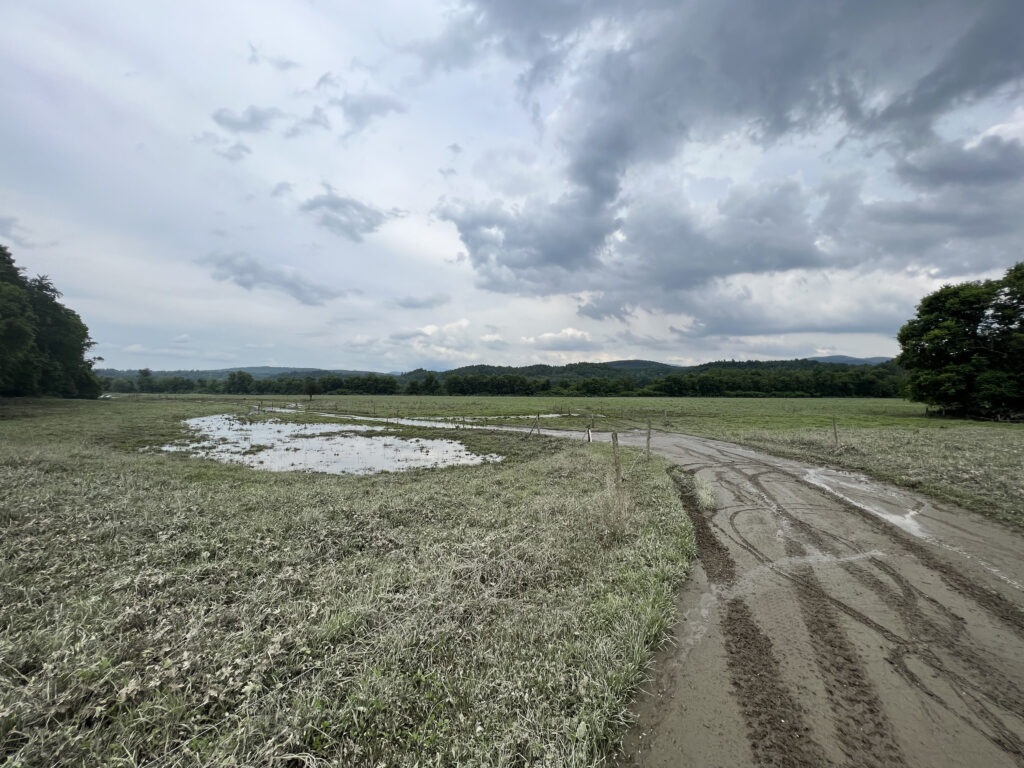
Other items on her flood recovery task list include fixing her formerly submerged fences, repairing her cows’ underpass beneath the train tracks, and cleaning up debris.
This is a far cry from what Cameron would be doing were it not for the biblical rains. During this time of year, she would usually be creating new paddocks for cows to graze, cutting hay, spreading manure on cut fields, and maintaining fence lines with weed whacking and brush hogging.
While the months ahead are uncertain for Cameron and other Vermont farmers like her, recovery efforts will go hand-in-hand with their ongoing practices to protect water quality, support soil health, and address climate issues.
For Cameron, being an organic farmer is a core part of how she tackles these goals.
The most significant thing she has done to date has been to progressively convert 100 acres of perpetual corn to perennial forage for her cows to graze.
“That’s a lot of soil that has been protected,” she explains. “Especially with a flood event like this, that soil didn’t go anywhere.”
In addition, Cameron rotationally grazes her cows. As part of this, she has changed over a lot of barbed wire to high tensile perimeter fence. On a daily basis, she divides large pieces of pasture into smaller paddocks, usually 1-2 acres in size.
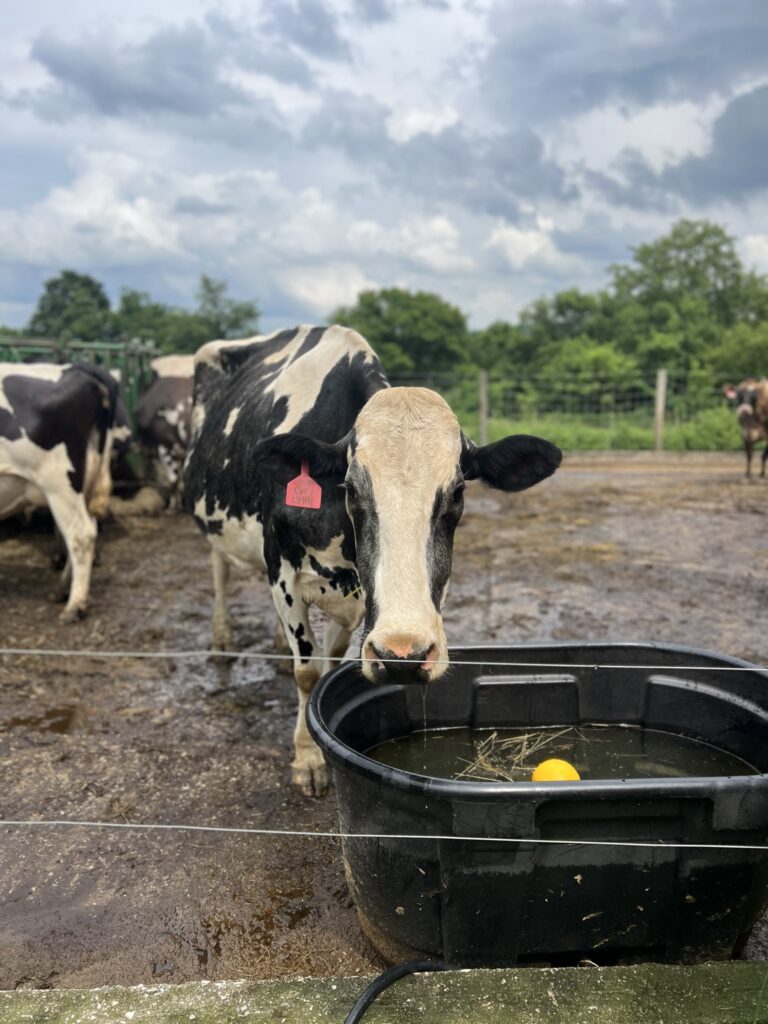
“I vary the sizes depending on what the grass is doing and how much the cows are eating,” Cameron explains.
“As I cut hay fields and need more pasture throughout the year, I’ll add in acres from hay fields after second or third cut,” she shares. The farm has 50 acres of permanent pasture, but by the end of the season, the cows are grazing an additional 60 acres.
The benefits of rotational grazing are numerous for livestock and the environment, alike.
“My cows are happier, healthier,” Cameron observes. “They do a better job of eating what’s there. The grass regrowth is good. If they’re only there for a day, I try to start with the grass 8-12 inches and only let them chew it down to 4-6 inches. That way, you get a faster regrowth and it protects the soil.”
“It also keeps more moisture in the soil–if it’s a dry year,” Cameron says wryly.
Rotational grazing is a significant part of Cameron’s farming philosophy.
“I only want to have as many cows as my land can support,” she explains. “I’m not trying to get bigger. I’m only trying to make enough feed for this size herd.”
While herd health and environmental impacts are primary drivers behind Cameron’s decision-making, she also factors in the human quotient.
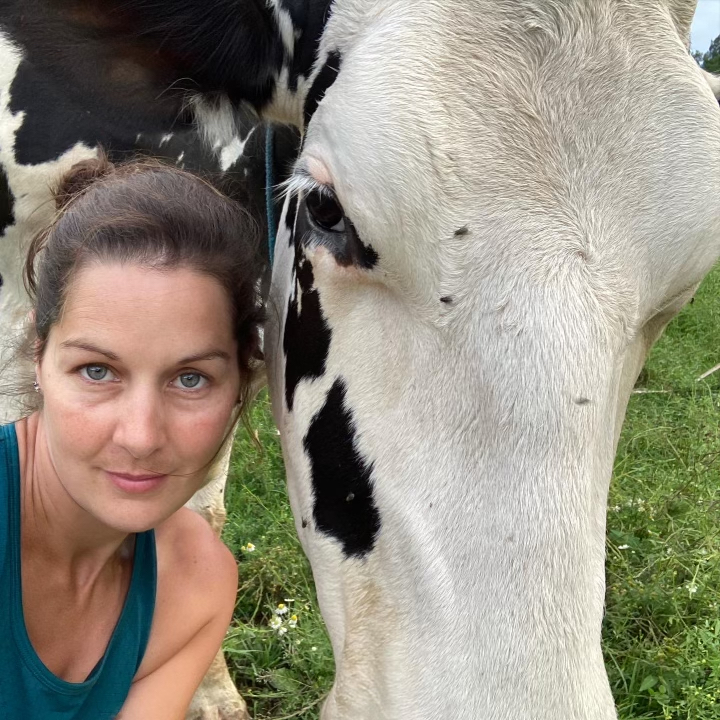
For example, back in 2018, she made a somewhat radical move: She switched the cows to once-a-day milking, a practice she has continued to this day.
She had her own quality of life and time constraints to consider. For the most part, she had been farming alone for many years. She found it difficult to milk her cows twice per day, complete other tasks and projects, and have a life off the farm.
She started reading up on the practice, and decided to give it a try.
“I made a plan based on where my cows would be in their lactation in winter. I wanted to start in February,” she explains. “But then we had a 20-below weekend in January and I just said, ‘Today’s the day.’” Sometimes necessity is truly the mother of invention!
How’d it go?
“I only had about five cows that were upset about it,” she shares. “They got over it in a few days.”
Over time, Cameron has observed that her cows are happier and their body condition has improved. Initially, she lost 15-20% in production and experienced a spike in somatic cells, but production has since returned to normal levels and her average somatic cell count is 150,000–lower than when she was milking twice per day.
And, of course, the benefits for her are abundant: She has less stress and more time to get other things done.
As Cameron looks to the future of sustainability on her farm, her biggest goal is to improve manure management.

“We don’t have a manure pit because we don’t have just liquid manure,” Cameron explains.
There is manure from both horses and cows, along with sand bedding, sawdust bedding, and hay waste. All of that gets mixed together into a semi-solid, which would not be conducive to a manure pit.
“We just purchased a side-slinger spreader that will do a better job of spreading,” she says. “We don’t make enough manure to cover all of our fields, so one of our neighbors comes over to spread some of theirs. We’re well within our nutrient needs and loads.”
For Cameron, being a good steward of the environment is about maintaining her family legacy of caring for this land.
“If you could go down there and it were not covered in water and silt? It’s just beautiful,” Cameron tells us. “I want it to stay that way. I want it to be productive and provide for my animals because I love my cows.”
Update: Since we visited with Cameron and wrote our story, she shared some good news with us! She and her team mowed and brushogged the areas that had been flooded. Cameron reports the fields are growing back beautifully. She hopes to get another cut of hay and use some of the pasture again in early September.
